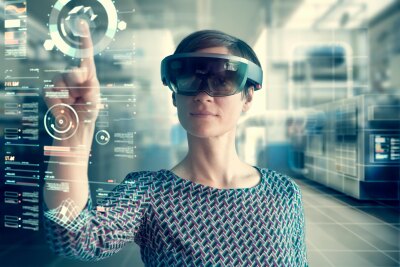
XR in Teaching & Learning Topics
Additional Resources
How XR is Being Used Today
Extended reality (XR) has enabled a revolution in education by allowing students to become immersed in interactive virtual environments in which they can explore and interact with spaces and objects like they never could before. With virtual field trips, anatomical dissections, historical reenactments, skills training, and so much more, XR is enabling experiential learning that transcends traditional classroom boundaries and fosters seamless collaboration between the faculty and the learner.
- Exploring the Future of Extended Reality in Highter Education *
- How XR Technology is Revolutionizing Learning and Teaching Experiences
- Augmented Reality in Education: Interactive Classrooms
- Future Prospects and Considerations for AR and VR in Higher Education Academic Technology *
The Future of XR in Education
The future of extended reality (XR) in education holds tremendous amounts of potential as it continues to evolve with advances in technology and decreases in cost. That evolution will be shaped by the aspirations of present XR adopters and practitioners. XR has the potential to offer even more immersive and personalized learning experiences, enabling students to interact with realistic virtual worlds, intelligent virtual tutors, and adaptive learning environments that cater to their individual needs, fostering deep engagement and lifelong learning.
- Exploring the Future of Extended Reality in Higher Education *
- Future Prospects and Considerations for AR and VR in Higher Education Academic Technology *
Steps to Implement XR
Implementing XR into higher education can be a complex challenge that requires investment, experience, and collaboration amongst stakeholders. We can look to pioneer institutions that have overcome this challenge by successfully implemented XR into their higher education curriculum through vision, collaboration, guideline development, partnerships, support, and funding.
XR Technology and Tools
To explore the wide range of tools available for implementing XR, this list provides an overview of some of the key technology tools used in extended reality. From hardware devices to software platforms, these tools offer educators and learners the means to create, explore, and engage with XR environments. Whether it’s through VR headsets, AR-enabled smartphones, or content development platforms, these tools are shaping the future of XR and its impact on teaching, learning, and research.
XR Planning and Consideration
While there is now empirical evidence that XR is an effective tool in active and experiential learning, its application is not always called for and there are many factors to consider in its implementation. These include alignment with pedagogical goals, accessibility for all students, technical feasibility, faculty support, and sustainable growth.
- VR, AR and XR: What’s the Difference, and How Can They Transform Online Learning?
- Future Prospects and Considerations for AR and VR in Higher Education Academic Technology *
- Why Virtual Reality Can Make Learning More Accessible and Affordable
XR Application Case Studies and Examples
Extended reality (XR) technology is gaining significant traction in higher education today. Several institutions have embraced XR and successfully integrated it into their educational practices, yielding positive outcomes for students and faculty alike. The links below are real-world examples of successful XR implementations in higher education. The resources here highlight the diverse ways in which XR has been used across disciplines, showcasing its potential to transform teaching, enhance learning outcomes, and foster innovation in the educational field.
- Making VR a Reality in the Classroom
- The James and Anne Duderstadt Center
- VR@Illinois
- Making VR a Reality in Business Classrooms
- University of Michigan Center for Academic Innovation
*Articles that cover multiple categories
Module Navigation
- Next Module: No More Modules in this Section
- Previous Module: Equipment
- Current Topic: XR in Teaching & Learning
- Next Topic:
Leave Your Feedback
You must be logged in to post a comment.